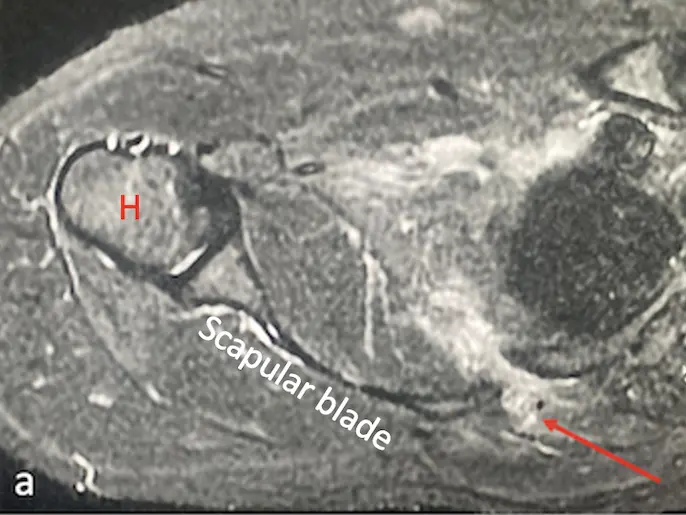Polyorchidism is a rare congenital disorder defined as the presence of more than two testicles for which the underlying etiology is unknown. This report examines a novel case, correlates findings to the literature, and discusses potential mechanisms of dysgenesis. This study was conducted on a 96-year-old male cadaver. Meticulous skilled dissection was done with careful attention to the pelvis, the inguinal region, the scrotum and testes. Measurements of the scrotal testes (STs), supernumerary testes (SNTs), scrotal epididymides (SEs), supernumerary epididymides (SNEs), ductus deferens (DD) and supernumerary ductus deferens (SDD) were taken, and testicular volume was calculated. Sagittal sectioning of STs, SNTs, SEs and SNEs was performed and, using standard histologic protocol, tissues were processed, stained with H&E, and examined. Histological findings supported the anatomical suspicion of high, bilateral inguinal polyorchdism, or tetraorchdism, in this patient. STs and SNTs have normal, gross morphological features. The left SNT was supplied by the testicular artery, and the right SNT by the inferior epigastric artery. Both SNTs and SNEs were infiltrated with adipose tissue, whereas the scrotal homologues were histologically normal. Testicular volumes were 26.5 cm3 and 23.7 cm3, and 12.3 cm3 and 0.55 cm3, for the left and right STs and SNTs, respectively. The left and right SEs measured 7.2 cm and 7.0 cm; the left and right SNEs measured 4.7 cm and 1.7 cm, respectively. The left DD measured 40.2 cm from the scrotum. The SDD from the left SNT measured 5.9 cm and joined the main ductus 16 cm proximal to its origin. The right main DD measured 39.2 cm, and the SDD from the right SNT was 3.2 cm and joined the main DD 17.4 cm proximal to its origin. The current work suggests a novel classification for polyorchidism of Type 3, Subgroup B, or SNT attached to the draining epididymis and vas deferens without reproductive potential and SNT located outside the scrotal sac. Clinicians must correlate anatomical and histological findings in suspected polyorchids to avoid misdiagnosis of SNTs as benign lipomas.
An unusual case of quadruple polyorchidism in a human cadaver mimicking bilateral lipoma
Keywords: Anatomy, Congenital disorder, Polyorchid, Polyorchidism, Supernumerary, Testes, Testicle, Tetraorchidism
Ernest F. Talarico, Jr.1AB, Joseph G. Castaneda2B, Sana M. Wahab2B, Katelyn M. Paulus2B, Jack D. Walsh2B, Amy E. Stromberg2B, Victoria N. Olson2B, Paul J. Janus2B, Nicholas R. Rocco3C
1 Department of Anatomy
2 Department of Biology
3 Department of Urology
A Tan Tao University School of Medicine, Long An Province, Việt Nam
B North Park University, Chicago, Illinois, USA
C United States Naval Medical Center, San Diego, California, USA
SUMMARY
Eur. J. Anat.
, 26
(1):
117-
131
(2022)
ISSN 2340-311X (Online)
Sign up or Login
Related articles
Review
Case report



